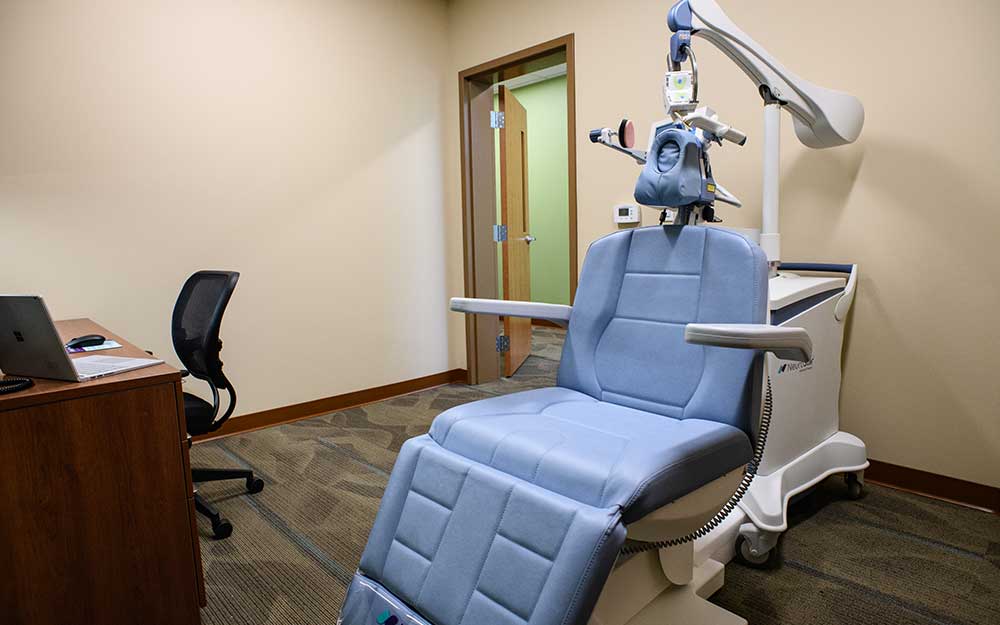Transcranial magnetic stimulation (TMS) has been shown to reduce depressive symptoms, with about 50% of patients seeing a significant decrease in symptoms.
When antidepressant medication has proven ineffective, transcranial magnetic stimulation may be a suitable solution for those who have been diagnosed with major depressive disorder (MDD).
Transcranial magnetic stimulation, often referred to as TMS, is an outpatient procedure used to treat MDD when other more traditional methods of treatment such as antidepressant medications have not been successful or have not provided sufficient relief.
How does TMS work?
TMS uses a specialized electromagnetic coil that produces targeted magnetic pulses that stimulate a portion of the brain that is underactive in patients suffering from depression. The magnetic pulses used during TMS treatment promote blood flow to an area of the brain believed to be affected by depression. This increased blood flow in turn contributes to the easing of depressive symptoms.
It’s important to note, however, that TMS should not be your only method of treatment. “It’s important to make sure that you’re not just relying on transcranial magnetic stimulation to help you feel better, but that you’re also doing some other things that are necessary to see improvement,” says Dr. Tyler Rickers, DO, director of TMS services at Rogers Behavioral Health. This includes things like regularly attending therapy, eating healthy, and exercising.
What does TMS feel like?
After the coil is placed against a patient’s scalp, the machine makes a clicking sound as the pulses begin. According to Dr. Rickers, “It’s an unusual feeling, almost like someone tapping on your head, but it’s not painful.” Treatment may be a bit uncomfortable at first, and some patients are more sensitive to it, but TMS is typically well tolerated.
Are there TMS side effects?
TMS may cause some mild side effects. The most common include headache, scalp tenderness, lightheadedness, muscle spasms, or a tingling sensation. The good news is that these side effects are often only experienced during the first few weeks of treatment. Rarely, TMS may lead to more serious side effects including seizures or hearing loss. The treatment team provides patients with ear protection to prevent hearing issues and will discuss possible side effects and risk factors in greater depth.
How long do TMS treatments last?
A typical treatment plan involves sessions that take just under 20 minutes. These sessions are scheduled five days a week for four to six weeks for a total of about 30 sessions, depending on how each patient responds to treatment and other factors. The first treatment, called the motor threshold determination, is a longer appointment when the treatment team “maps” the brain to determine where the pulses will be directed and how much stimulation is needed.
TMS at Rogers
Rogers offers outpatient TMS treatment for ages 18. To find out if TMS is an option for you, call 800-767-4411 for more information or to request a free, confidential screening.


